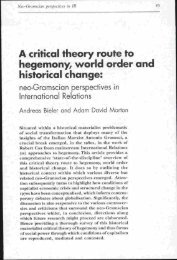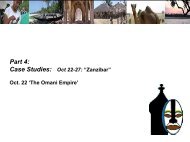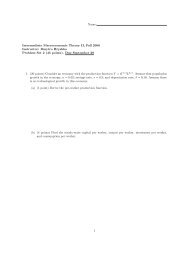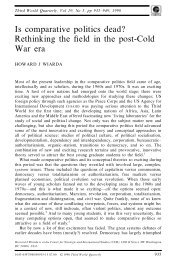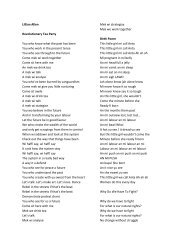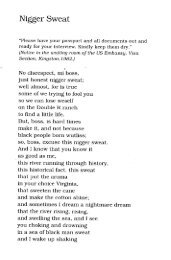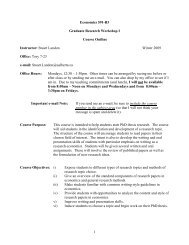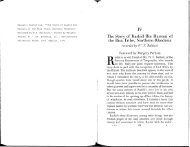personal memories revolutionary states and indian ocean migrations
personal memories revolutionary states and indian ocean migrations
personal memories revolutionary states and indian ocean migrations
Create successful ePaper yourself
Turn your PDF publications into a flip-book with our unique Google optimized e-Paper software.
Zanzibar had the revolution not taken place. Indeed, she considered staying in<br />
Zanzibar as some other (albeit few) women <strong>and</strong> families had despite the revolution.<br />
In what ways Ghania could or would not eventually also have been “from there”<br />
opens questions about the status of the previous waves of Omanis in Zanzibar <strong>and</strong><br />
the ways they came, in the years just before the revolution, to claim to be<br />
Zanzibaris (rather than Omani Arabs) in Zanzibar as well as they came to be<br />
considered “Zanzibaris” in Oman. Although she lived in East Africa for about 10<br />
years, she would not, in Oman today, be considered a “Zanzibari,” as the<br />
descendents of the previous generations of Omanis to East African have been. She<br />
was, instead, a manga Arab.<br />
CONCLUSIONS<br />
In the first half of the twentieth century <strong>and</strong> especially after the<br />
intermittent successes of the clove industry in the 1920s <strong>and</strong> during the turbulence<br />
of interior Oman’s politics, thous<strong>and</strong>s of Omanis from towns like Bahla undertook<br />
the arduous journey from their desert oases to coastal Oman <strong>and</strong> on to East Africa.<br />
For the most part, the travelers were men looking for temporary work on the clove<br />
<strong>and</strong> coconut plantations or as porters in the market <strong>and</strong> port. Many were also<br />
hoping to set up their own shops <strong>and</strong> farms, bringing their families with them from<br />
Oman. They often expected to move outside Zanzibar’s capital, Stone Town, to the<br />
villages either on the isl<strong>and</strong>’s coast or in the more fertile central <strong>and</strong> northern<br />
interior. While they certainly benefited from the economic <strong>and</strong> political assistance<br />
of the policies of the British protectorate administration, they were hardly “elite”<br />
large plantation owners or members of Stone Town’s cosmopolitan social world.<br />
Indeed, they were hindered in their attempts at migration. Thus, to the extent that<br />
families <strong>and</strong> women such as Ghania participated in agricultural life <strong>and</strong> shopkeeping,<br />
this <strong>personal</strong> story reveals aspects of rural life that complement <strong>and</strong><br />
contrast both with the historiographic record <strong>and</strong> social expectations in<br />
contemporary Oman.<br />
At the same time, this account cannot be understood isolated from its<br />
practice as memory work, both in its content <strong>and</strong> in its form. Indeed, in<br />
contemporary Oman, Ghania’s emphasis on her daily activities in the store <strong>and</strong> on<br />
the farm works to highlight both local Omani hierarchies <strong>and</strong> her <strong>personal</strong><br />
independence <strong>and</strong> strength, obfuscating to some extent the tense racialized relations<br />
on Zanzibar before the revolution. Striking, however, in this account is also<br />
Ghania’s apparent detachment from the affective weight that arduous travel, death<br />
of a mother <strong>and</strong> a massacre might be expected to convey. Rather than simply draw<br />
conclusions about the culturally appropriate articulation <strong>and</strong> structuring of grief <strong>and</strong><br />
sentiment, her renderings could also be understood to heighten her own message of<br />
independence <strong>and</strong> strength, a message that is geared not so much against the<br />
ravages of a massacre or ethnic tensions, but against the vagaries of a <strong>personal</strong><br />
story. In the end, this is a story, therefore, not only of a class of migrants <strong>and</strong> the<br />
violent revolution focused against them, but of a <strong>personal</strong> attempt at balancing<br />
between independence <strong>and</strong> loneliness, between strength <strong>and</strong> reliance.<br />
http://web.mit.edu/cis/www/mitejmes/<br />
31




